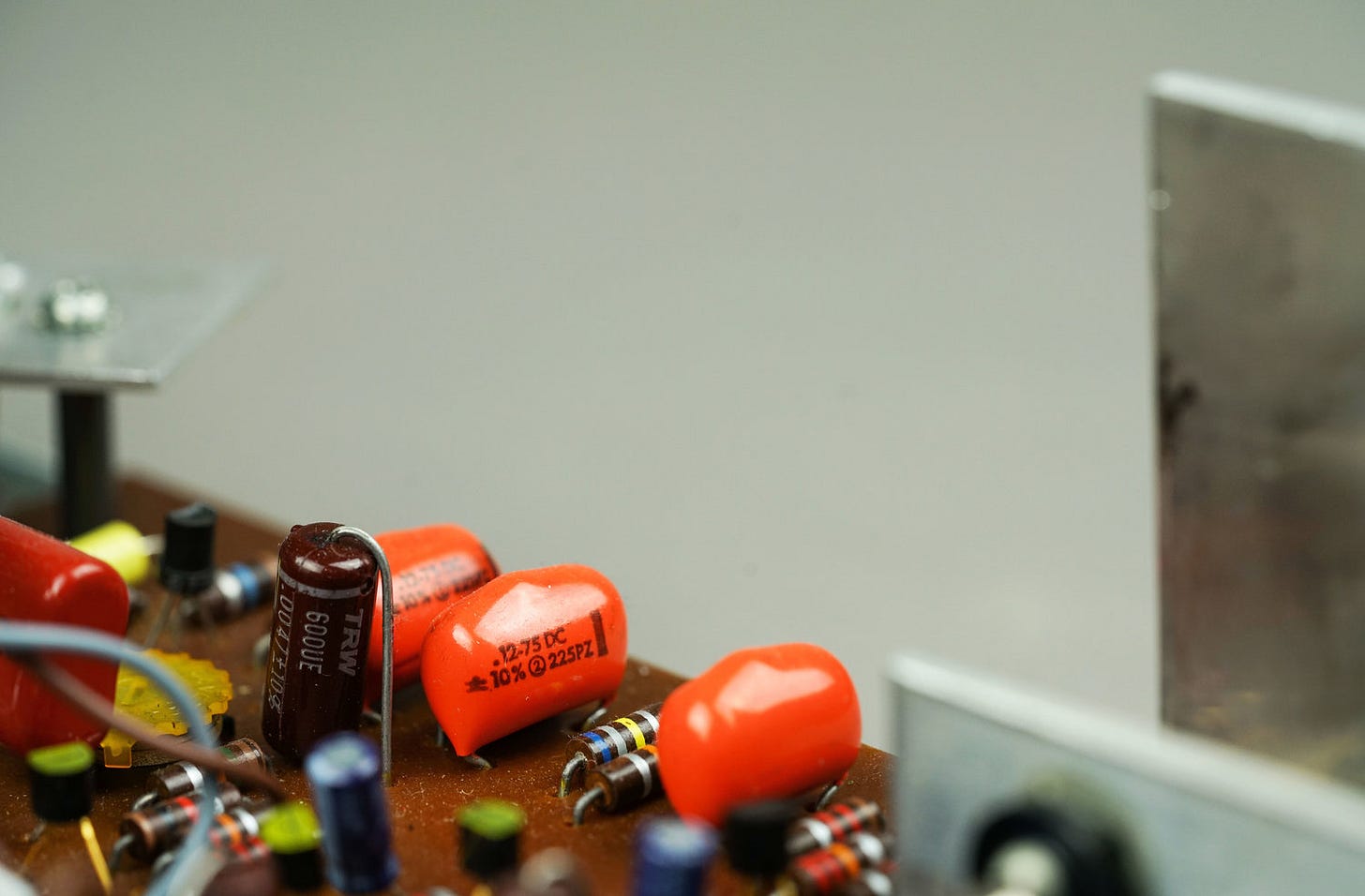How to fix broken tremolo in any vintage amplifier
Split the circuit into two parts, and it's easy to track down malfunctioning tremolo components
In a vintage amplifier, broken tremolo is extremely fixable.
So, okay, this sentence deserves a couple of caveats:
If the amp has issues other than broken tremolo, the problem is a little more complex than this article assumes. You don’t have to fix the other problems first, but you should keep them in mind during the troubleshooting process. Amplifier symptoms are often related.
Tremolo is extremely fixable to the extent that replacement components can be obtained. Some components, such as varistors, or the Wurlitzer 145’s 6K11 tube, are expensive or hard to find. This makes it particularly important to troubleshoot systematically, so you don’t end up replacing rare parts unless they are actually broken.
But, generally, the hardest part of troubleshooting is locating the problem area in the circuit. If the amp is working, but the tremolo is broken, you can pretty confidently assume that the problem is somewhere in the tremolo circuit. Vintage circuits are small, and they operate in predictable ways. If you know how they work, locating the malfunction is simple.
In this article, I’ll explain how tremolo circuits work. Then, I’ll show you how to use that information to diagnose tremolo problems in the most common tremolo circuits: bias-shifting and optocoupler tremolo. The first part of the article applies to tremolo that is either absent or extremely faint. At the end of the article, I’ll also discuss tremolo that is working but noisy: either it is introducing hum into the circuit, or producing an audible thump.
How a tremolo circuit works
A tremolo circuit has two parts:
First, you need a tremolo signal. In vintage amps, this is usually accomplished with an oscillator circuit that creates a sine wave.
Next, you need to somehow mix the tremolo signal with the audio signal. (In this article, we will call this the mixing circuit.) This is usually done via an optocoupler (also called an opto-isolator, or an LDR) or by shifting the bias of a gain stage.



